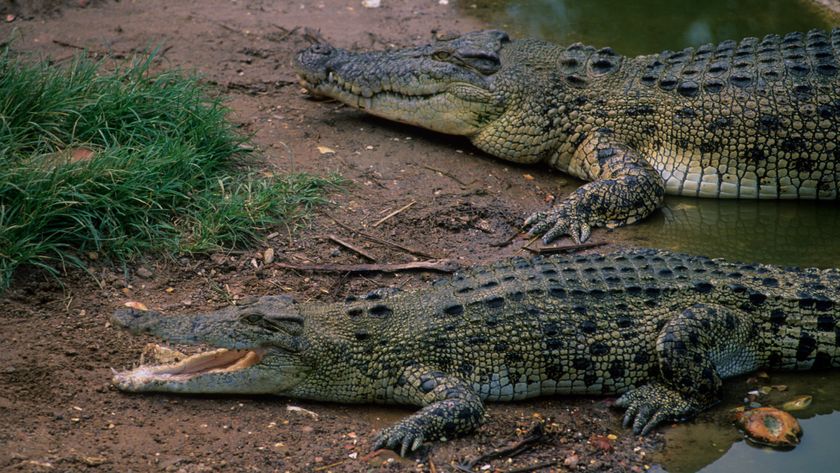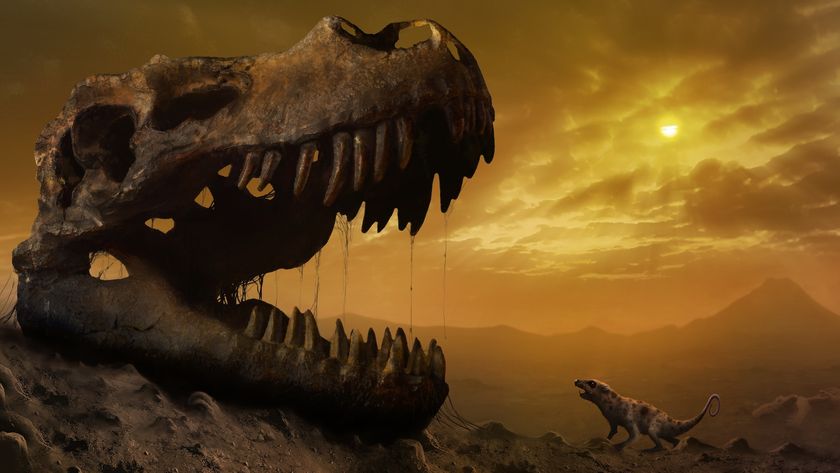Images: Carnivores of Europe
The large carnivores that once roamed Europe's landscapes — including bears, wolves, lynx and wolverines — are experiencing a resurgence in their numbers, a new study finds. What's more, the animals are coming back in nonprotected areas, where they must coexist alongside human societies.
The reasons for the success include cooperation between people accross national borders and strong regulations. But public attitudes towards animals are also important, said study leader Guillaume Chapron, a professor at the Swedish University of Agricultural Sciences' Grimsö Wildlife Research Station. [Full story: Carnivore Comeback: Bears and Wolves Are Thriving in Europe]
Here are images of Europe's carnivores:

A pair of wolf pups (Canis lupus) near their den in western Poland. Continental Europe is half the size of the contiguous United States and has twice the population density; nevertheless, it is home to twice the number of gray wolves. More than 12,000 wolves live in Europe, spread over 28 countries, and a new study in the journal Science published on Dec. 18 finds that other large carnivores are rebounding as well. (CREDIT: Robert W. Myslajek)
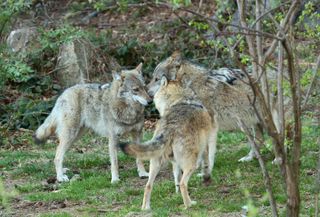
A pack of gray wolves (Canis lupus) in Slovenia. Human-carnivore clashes do occur in Europe, according to Guillaume Chapron of the Swedish University of Agricultural Science, but gray wolves and humans manage to coexist. In contrast, the U.S. model of conservation typically places large predators such as wolves in protected, remote areas, Chapron told Live Science. (CREDIT: Miha Krofel, Slovenia)

A gray wolf in Slovenia. Researchers compiled data from across Europe (excluding Russia, Ukraine and Belarus) to determine how large carnivores — wolves, brown bears, lynx and wolverines — are faring across the continent. They found promising population numbers, with almost every country maintaining a breeding population of at least one large carnivore. (CREDIT: Miha Krofel, Slovenia)
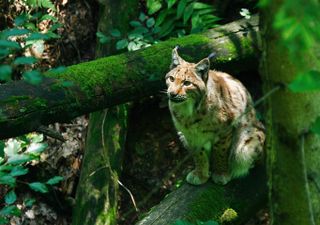
The Eurasian lynx (Lynx lynx) is Europe's largest wild cat, weighing in at up to 66 pounds (30 kilograms). Between 1930 and 1950, there were only 700 lynx in Europe, according to the World Wildlife Fund. Today, the total population is at 9,000, spread over 11 smaller populations in 23 countries. (CREDIT: Miha Krofel, Slovenia)
Sign up for the Live Science daily newsletter now
Get the world’s most fascinating discoveries delivered straight to your inbox.
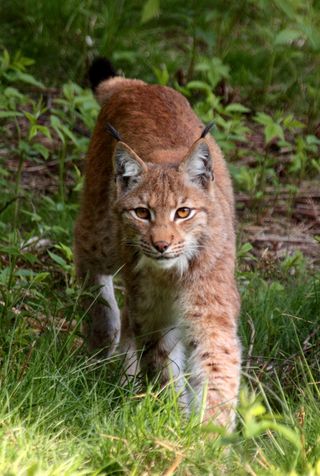
Lynx live in forested areas and feed on small deer and other prey. Though the lynx population in Europe has rebounded, some subpopulations remain endangered, according to the International Union for Conservation of Nature. (CREDIT: Miha Krofel, Slovenia)
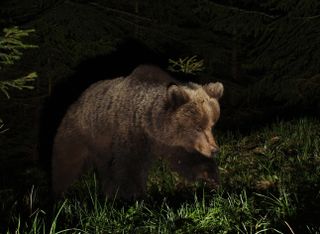
The Eurasian brown bear (Ursus arctos) in the Dinaric Mountains of Slovenia. Europe is home to 17,000 brown bears, making them the most common large predator on the continent. There are 10 brown bear populations spread over 22 European countries. (CREDIT: Miha Krofel, Slovenia)
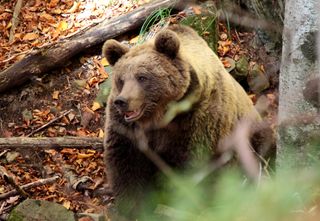
A female brown bear in Slovenia's Dinaric Mountains. Though brown bears have been rebounding, they remain endangered in much of central Europe, according to the Large Herbivore Network. In Austria, for example, poachers eliminated a population of brown bears that had been reintroduced. (CREDIT: Miha Krofel, Slovenia)
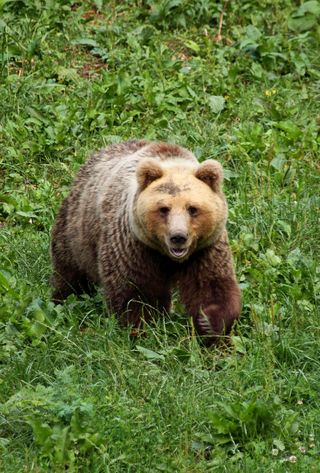
Brown bears, like other European carnivores, survive in areas where there is plenty of human influence. On average, 19 people per square kilometer live in bear territory, 21.8 people per square kilometer coexist with lynx and 36.7 people per square kilometer live alongside wolves. Wolverines, which are limited to cold climates in Scandinavia, live in areas with lower population density, an average of 1.4 people per square kilometer. (CREDIT: Miha Krofel, Slovenia)
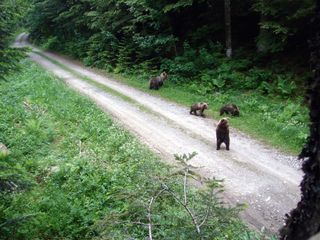
A female brown bear and her cubs along a road in Bosnia-Herzegovina. All medium-to-large populations of bears in Europe are growing in size, according to Chapron and his colleagues. Protective legislation, such as the cross-border Habitats Directive, have helped save Europe's large carnivores, according to Chapron. Human attitudes toward wildlife also make a difference, Chapron said; measures must be taken to ensure that livestock farmers can make a living despite occasional loses from carnivores. (CREDIT: Sasa Kunovac)
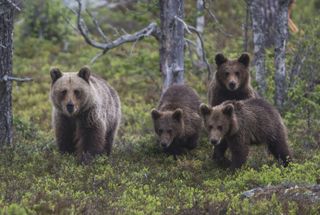
A female brown bear with three yearlings in Gutulia National Park in southeastern Norway. Bears and other carnivores do not only live in protected areas; Europe lacks enough true wilderness for that model of conservation, Chapron said. Instead, humans and wildlife must coexist. (CREDIT: Kjell Isaksen)

Stephanie Pappas is a contributing writer for Live Science, covering topics ranging from geoscience to archaeology to the human brain and behavior. She was previously a senior writer for Live Science but is now a freelancer based in Denver, Colorado, and regularly contributes to Scientific American and The Monitor, the monthly magazine of the American Psychological Association. Stephanie received a bachelor's degree in psychology from the University of South Carolina and a graduate certificate in science communication from the University of California, Santa Cruz.
